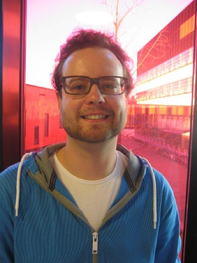Templated electrodeposition of functional nanostructures: nanowires, nanotubes and nanocubes
Promotion date: January 17.
Promotor: Prof.dr.ir. André ten Elshof
Assistant Promotor: Prof.dr.ing. Dave Blank
| Templated electrodeposition is the synthesis technique that was used throughout this thesis, and it comprises the use of a template with specific shape and dimensions for the formation of different types of nanostructures. Throughout this thesis, three different nanostructures were made: nanowires, nanotubes and nanocubes. Since electrodeposition can be used for the synthesis of many different types of materials - like metals, metal oxides and metal sulphides - different types of functionalities can be given to these nanostructures. Throughout this thesis, photocatalytic H2 formation was the functionality that was studied most. Also electrocatalytic H2 formation and magnetic properties were studied. An axially segmented nanowire system containing Compared to bare TiO2 nanotubes, coaxial TiO2-Ag nanowires made via the electrochemically induced sol-gel method, showed the highest H2 formation rate: 1.2 ± 0.3 mmol/h·g. Furthermore, it is shown that an increase in the number of p-n interfaces within one Cu2O nanowire initially increased the photocatalytic activity, but it is suggested that the mechanical instability of the formed structures after adding more p- and n-type segments decreased the photocatalytic activity accordingly. A method is presented for the formation of nanocubes via templated electrodeposition inside a template containing a cubic hole pattern. |
In what respect was your research innovative?
Using the membrane-like templates is known for the fabrication of nanowires. For the production of nanocubes however, this procedure is completely new. We looked for strategies to realize this for quite a long time when I met Japanese researchers from Osaka University.
We started collaborating since we appeared to possess complementary expertise fields. In Japan they were able to make templates with a cubic hole pattern, which they placed on a conductive substrate for us. On top of this conducting substrate, we grew the desired material via templated electrodeposition, which perfectly replicated the template used.
Via another collaboration, with Purdue University in the US, which I visited for four months during my time as PhD student, I learned to deposit Cu2O using electrodeposition, which is a highly promising material to be applied in photoelectrochemical water splitting and in solar cells. After shaping this material in our nanocube templates, we found that the photoelectrochemical efficiency was enhanced compared to thin films made from the same material.
One of the functionalities looked at in this project was the photocatalytic H2 formation. We were able to fabricate segmented nanowire systems in order to show water splitting functionality without needing an external circuit. This way of H2 formation is a novel approach as well.
All of these techniques are relevant for future innovations in products and processes, I believe. This cannot be expected in the near future, but in the medium term, I’m sure.
Did you manage to have some nice articles published?
Publications appeared in ACS Applied Materials and Interfaces, in Small, in Electrochemica Acta, and in the Journal of Materials Chemistry A.
One publication is planned for the Journal of Visualized Experiments. For this journal, I wrote a protocol which we used to make photocatalytic nanowires via templated electrodeposition and show the functionality of these nanowires via autonomous H2 formation. The Journal fabricated a film script from this protocol, and in February a film crew from the Journal will come and visit our lab in order to film all the experimental steps involved.
This film is then published together with some graphs, pictures and texts. This is a quite new approach in communicating scientific results. I think this kind of approach is a very attractive one, and is a great way to communicate scientific research in a new and appealing way. Furthermore, the experiments we choose for this video article are all very simple and basic, so that scientists who are new in this field can easily learn how to replicate the experiments.
What are your future plans?
I like the freedom of research in academics. In my PhD project I enjoyed pursuing my own ideas and skills, in collaboration with talented experts both within the Mesa+ institute as well as from abroad. So, I like to stay involved in academic research the years to come.
Right now I am waiting for the approval of a proposal for a post-doc position at the GSI institute for heavy ion irradiation in Darmstadt. The topic will be similar to the PhD work performed here at Mesa+. Photocatalytic nanowires will be at the centre of research. For the production of these nanowires facilities are present in Germany to fabricate the needed templates ourselves, so we don’t need to rely on commercial products. This allows us to make various shapes like mechanically stable nanowire networks.
What, in your opinion, is important for Mesa+ to stay successful as an international institute?
Mesa+ is doing very nicely, I am sure. The Institute is renowned for its high standard scientific research and the facilities present here within the Nanolab. Perhaps the collaboration between research groups can be strengthened on topics that are relevant for two or more groups.

